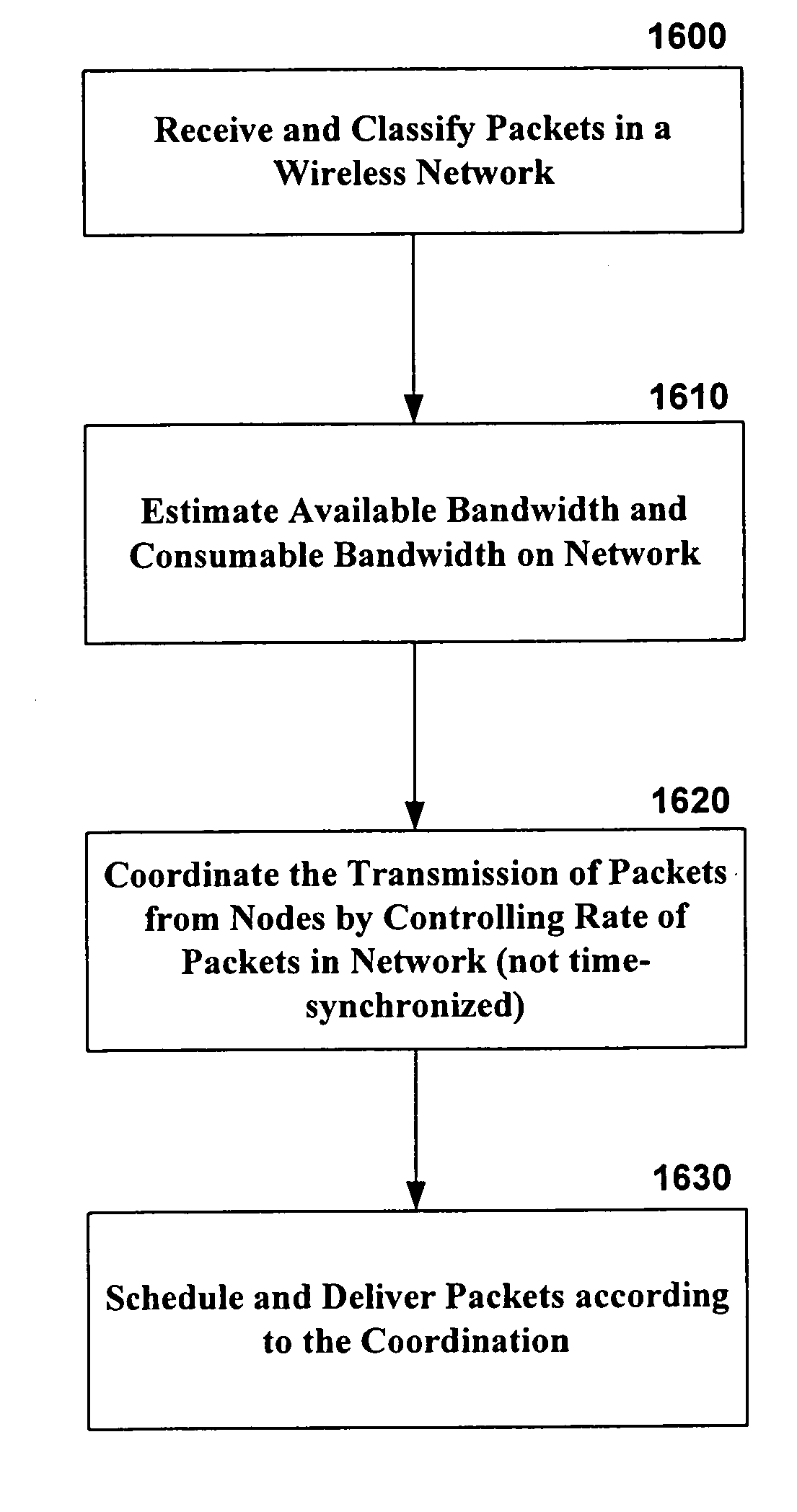Systems and methods for coordinating wireless traffic for heterogeneous wireless devices
a wireless device and wireless traffic technology, applied in the field of wireless traffic coordination systems and methods, can solve the problems of consuming valuable wireless capacity, unable to achieve easy and reliable network communication with different heterogeneous radios and devices, and introducing considerable overhead in the air time cost of transmission, so as to simplify priority queueing and traffic shaping functions, and facilitate the effect of taking advantag
- Summary
- Abstract
- Description
- Claims
- Application Information
AI Technical Summary
Benefits of technology
Problems solved by technology
Method used
Image
Examples
Embodiment Construction
Overview
[0031]As generally discussed, the number of wireless devices is increasing continuously in recent years. Wireless access, via cellular or WiFi, is widely deployed and many other wireless technologies, such as WiMax, are on the way. It is thus a goal of the invention to provide coordination among nodes to regulate and control transmission of VoIP packets and BE data packets for reducing collision and meeting QoS requirements. In various embodiments, for instance, the invention endeavors to implement such coordination among nodes in a distributed manner using pre-existing standard 802.11 MAC interfaces to avoid having to customize drivers and / or modify existing hardware. As described in more detail below, the coordination and cooperation at Layer 2.5 by software in accordance with the invention provides significant performance improvements achieving better coordination among different types of devices and protocols.
[0032]Thus, the present invention provides a unified software ...
PUM
 Login to View More
Login to View More Abstract
Description
Claims
Application Information
 Login to View More
Login to View More - R&D
- Intellectual Property
- Life Sciences
- Materials
- Tech Scout
- Unparalleled Data Quality
- Higher Quality Content
- 60% Fewer Hallucinations
Browse by: Latest US Patents, China's latest patents, Technical Efficacy Thesaurus, Application Domain, Technology Topic, Popular Technical Reports.
© 2025 PatSnap. All rights reserved.Legal|Privacy policy|Modern Slavery Act Transparency Statement|Sitemap|About US| Contact US: help@patsnap.com



